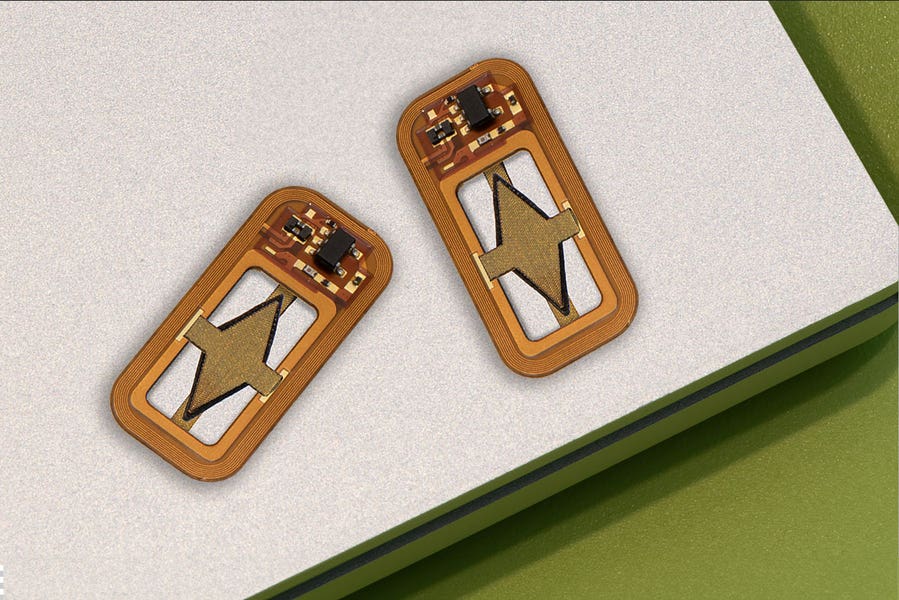An implantable device could enable injection-free control of diabetes
MIT has unveiled a implantable device that doesn’t just house insulin-producing islet cells but also boasts an integrated oxygen factory.

[Sept. 20, 2023: Staff Writer, The Brighter Side of News]
MIT engineers designed an implantable device that carries hundreds of thousands of islet cells along with its own on-board oxygen factory to keep the cells healthy. (CREDIT: Felice Frankel)
In a significant leap for diabetes treatment, MIT engineers have unveiled a pioneering implantable device that doesn't just house insulin-producing islet cells but also boasts an integrated oxygen factory.
This groundbreaking mechanism potentially sidesteps the issue of these cells running out of oxygen and consequently ceasing insulin production, a prevalent problem with conventional implants.
Understanding the Diabetes Challenge
Type 1 diabetes, unlike its Type 2 counterpart, necessitates frequent insulin injections. This is because the body fails to produce the required insulin naturally. While daily injections remain a lifesaving protocol, it's hardly a perfect solution. The injections often fail to replicate the body's innate ability to maintain blood glucose levels.
Pictured is the device submerged in water, generating oxygen (bottom) and hydrogen (top) bubbles without the need for any batteries or wires. (CREDIT: Claudia Liu and Dr. Siddharth Krishnan, MIT/Boston Children’s Hospital)
Daniel Anderson, an esteemed professor at MIT, commented on this, stating, “The vast majority of diabetics that are insulin-dependent are injecting themselves with insulin, and doing their very best, but they do not have healthy blood sugar levels.” He highlighted the unmatchable efficiency of a living pancreas, something these injections just can't replicate.
A Glimmer of Hope: Implantable Islet Cells
One avenue explored for treating Type 1 diabetes involves transplanting islet cells that produce insulin in response to blood glucose level spikes. While there has been success with transplanting islet cells harvested from human cadavers, recipients have to take immunosuppressive medications, which come with their own set of issues.
This photo shows the cathode side of fully assembled device, with a United States quarter-dollar coin for scale. (CREDIT: Claudia Liu and Dr. Siddharth Krishnan, MIT/Boston Children’s Hospital)
The research landscape is shifting towards deriving islet cells from stem cells, but these too require immunosuppressive drugs. Another possibility, which might eliminate the need for such medications, involves encapsulating these cells within an implant. However, the enduring challenge has been ensuring these encapsulated cells receive a consistent oxygen supply.
MIT's Solution: An Implant with an Oxygen Factory
MIT's novel approach can be likened to a living medical device synthesized from human cells secreting insulin, paired with an electronic life-support mechanism. The device is adept at generating oxygen by splitting water vapor present in the body, thanks to a proton-exchange membrane.
What's truly astonishing is that the implant doesn't rely on any external batteries. It uses a small voltage, produced through resonant inductive coupling, splitting water vapor into oxygen and hydrogen. This makes the implant largely self-sustaining, with the only external component being a coil patch on the skin.
Proof of Concept and Potential Applications
Trials in diabetic mice produced promising results. Implants with the oxygen factory maintained normal glucose levels in the mice. On the other hand, those without the oxygen-supply mechanism saw an elevation in blood sugar levels within two weeks.
Interestingly, the device also shows promise for conditions requiring prolonged protein delivery, potentially revolutionizing treatments beyond diabetes.
Related Stories
While the current device is approximately the size of a U.S. quarter, the aim is to develop an implant for human use roughly the size of a chewing gum stick. The team also seeks to evaluate the device's longevity in the body.
Dr. Siddharth Krishnan, the lead author of the study, conveyed optimism about the longevity and stability of the materials used. The long-term objective? Crafting living medical devices that remain in the body, producing vital drugs as necessary.
Robert Langer of MIT summed up the potential of this development, saying, “We are very excited about these findings, which we believe could provide a whole new way of someday treating diabetes and possibly other diseases.”
As we stand on the cusp of a revolutionary era in medical treatments, innovations like MIT's implantable device bring hope to millions. The days when diabetes was an insurmountable challenge might soon be behind us, replaced by a future where insulin production is both natural and sustainable.
Note: Materials provided by The Brighter Side of News. Content may be edited for style and length.
Like these kind of feel good stories? Get the Brighter Side of News' newsletter.



